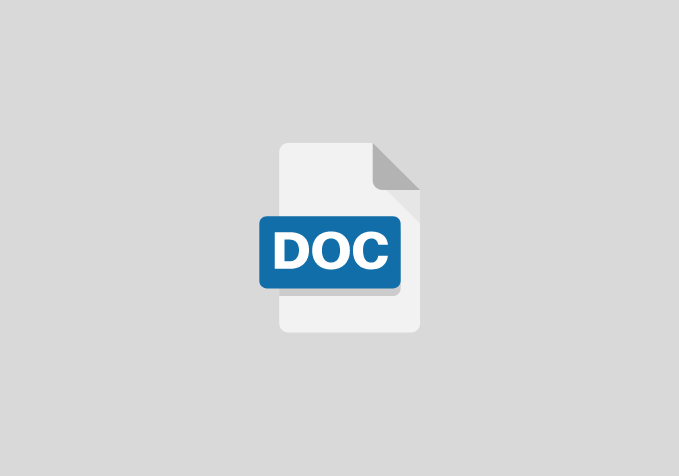A Proposal on Biology Teacher Attitude, Knowledge and Competency in the Use of ICT. Case Study Ikorodu LGA
Chapter One
Objective of the study
The main objective of the study to ascertain the biology teacher attitude knowledge and competency in the use of IC in Ikorodu Local government of Lagos state. The specific objective are;
- To find out the attitude of biology teacher on the use of ICT in selected secondary schools in Ikorodu Local government in Lagos
- To find out the knowledge of biology teacher on ICT in selected secondary schools in Lagos state
- To find out the difference between male and female biology teachers’ knowledge of ICT
Chapter Two
LITERATURE REVIEW
Concept of Information Communication technology
The phrase “Information Communication Technology” has been variously defined by many authors, so much so that, there is no universally accepted definition for it. This divergent views on the definition arise from the fact that the notions, tools and methods involved in ICTs are always evolving on almost a daily basis.
Etymologically, the phrase “Information Communication Technology” was first used by academic researchers, dating back to the 1980s. The abbreviation “ICT” however, became popular after it was used in a report to the UK government by Dennis Stevenson in 1997,and then in the revised National Curriculum for England, Wales and Northern Ireland in 2000.
Information and Communication Technologies (ICTs) is a broader term for Information Technology (IT), which refers to all communication technologies, including the internet, wireless networks, cell phones, computers, software, middleware, video-conferencing, social networking, and other media applications and services enabling users to access, retrieve, store, transmit, and manipulate information in a digital form.
ICTs are also used to refer to the convergence of media technology such as audio-visual and telephone networks with computer networks , by means of a unified system of cabling (including signal distribution and management) or link system.
It can also be defined as any product that can store, retrieve, manipulate, transmit or receive information electronically in a digital form. For example, personal computers, digital television, email, robots.According to Nwachukwu (2004), Information and communication technologies (ICTs) is the application of computers and other technologies to the acquisition, organization, storage, retrieval, and dissemination of information. However, in this context, information and communication technology is the use of electronic devices such as computers, telephones, internet, and satellite system, to store, retrieve and disseminate information in the form of data, text image and others.
American Library Association (1983) defined information communication technology (ICT) as the application of computers and other technologies to the acquisition, organization, storage, retrieval, and dissemination of information. The computers are used to process and store data, while telecommunication technology provides information communication tools, which make it possible for users to access databases and link them with other computer networks at different locations.
Also,the Encyclopedia of Computer Science, sees “Information Communication Technology (ICT) to mean an imprecise term frequently applied to broad areas of activities and technologies associated with the use of computers and communications”.
“Information Communication Technology is the result of the technological convergence of existing single isolated technologies viz, computer technology, communication technology, information processing, publishing technology etc.”Mahaptra and Ramesh(1994)
According to UNESCO “ICT is a scientific, technological and engineering discipline and management techniques used in handling information and application and association with social, economical and cultural matters”.
Rhine (2006) Information and Communication Technologies can be split into three components namely the technology part; information that the technology helps to deliver; and a communication process that the technology facilitates and serves as a medium for the information.
Chapter Three
RESEARCH DESIGN AND METHODOLOGY
The researcher used descriptive research survey design in building up this project work. The choice of this research design was considered appropriate because of its advantages of identifying attributes of a large population from a group of individuals. The design was suitable for the study as the study sought to biology teacher attitude, knowledge and competency in the use of ICT. Using ikorodu as a case study
Chapter Four
METHOD OF DATA ANALYSIS
The researcher will employ oral and direct interview in administering this research questions. Responses from the respondents were needed unlike questionnaires, which is less rewarding due to late receipt and loss of responses from respondents. The method of data analysis that will be used by the researcher is a package program to obtain range, mean, standard deviation and independent 2-test. Representations of the level of responses will be made in tabular form.
References
- Adeboye, K.R. (2011). Information technology as a vital tool to networking and resources sharing in government libraries and information centre. Training seminar on networking and resources sharing among government libraries. Minna.
- Aleuezuilo, E.O. & Agu .N. (2003). Research and Statistics in Education and Social Sciences: Methods and Application. Awka: Nuel Cent Publishers and Academic Press Ltd.
- Akudolu, L.R. & Olibie, E. (2007). Seeking appropriate ICT teaching approach for developing teacher ICT competencies views from European Union. Oriented Journal of Education. 3cil; 33-38.
- Egboka, P.N. (2012). The status of information and communication technology (ICT) in empowering policy implementation in university in south east zone of Nigeria. International Journal of Educational Research and Development (IJERD). 5 (1) 263-269.
- Federal Republic of Nigeria (2004). National Policy on education Lagos, Nigeria. NERDC press p.39.
- Federal republic if Nigeria (2006). Government in Action Retrieved from http://www.nigeria-first.org/article.2090.html.
- Modebelu, M.N., & Anebi, J. (2013). Use of information and communication technology (ICT) in teaching and learning of agricultural education in Nigeria. Unizik Orient Journal of Education. F (1), 135-141.
- Nwagbo, C. (2008). Science, technology and mathematics (STM) curriculum development: Focus on problems and prospect of biology curriculum delivery. In N.A. Udogi (ED), The 49th Annual Conference Proceeding of STAN on science curriculum Development (77-81) Ibandan. Heinemann.


